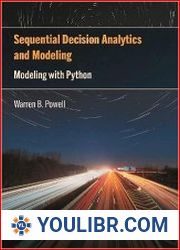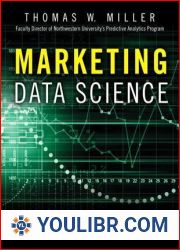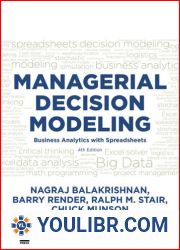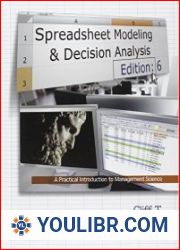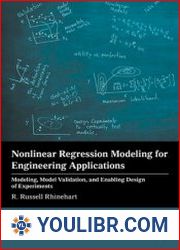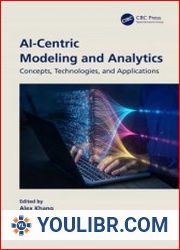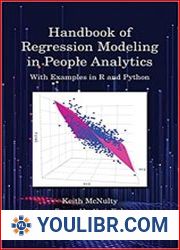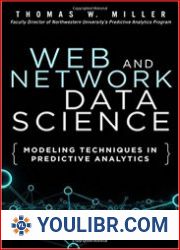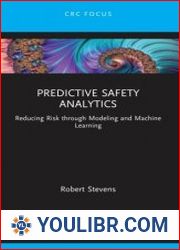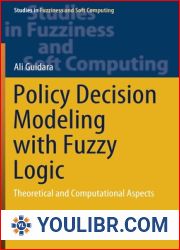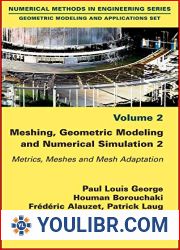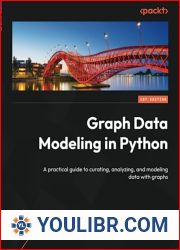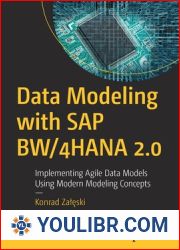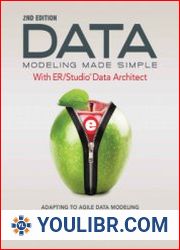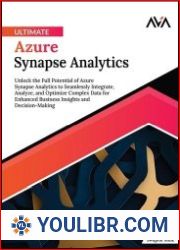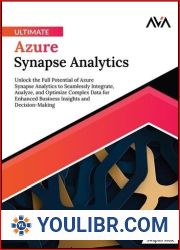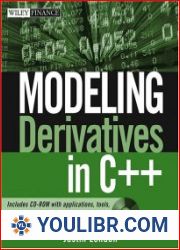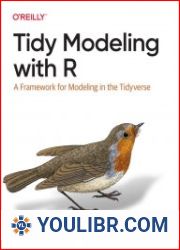
BOOKS - PROGRAMMING - Sequential Decision Analytics and Modeling Modeling with Python

Sequential Decision Analytics and Modeling Modeling with Python
Author: Warren B Powell
Year: 2022
Format: PDF
File size: 10.2 MB
Language: ENG
Year: 2022
Format: PDF
File size: 10.2 MB
Language: ENG
Sequential decision problems arise in virtually every human process. They span finance, energy, transportation, health, e-commerce, and supply chains and include pure learning problems that arise in laboratory or field experiments. They even cover search algorithms to maximize uncertain functions. An important dimension of every problem setting is the need to make decisions in the presence of different forms of uncertainty and evolving information processes. The goal of this book is to enable readers to understand how to approach, model and solve a sequential decision problem. To that end, it uses a teach-by-example style to illustrate a modeling framework that can represent any sequential decision problem. The presentation should not require mathematics beyond what would be expected in a first course on probability and statistics. This said, the book is centered on showing how to describe sequential decision problems using notation that is precise enough that it can be the basis of computer software. Python modules accompany most of the chapters; these modules were written around the modeling framework that runs throughout the book. At the same time, any software package that simulates a sequential decision problem, regardless of how it is being solved, can be translated directly into the modeling framework we use. For this reason, we encourage readers to look at any piece of notation as a variable in a computer program.
Sequential Decision Analytics and Modeling with Python В современном быстроразвивающемся мире технологий способность принимать обоснованные решения в условиях неопределенности становится все более важной. Последовательный анализ и моделирование решений - это новая область, которая решает проблемы принятия решений, когда информация является неполной или меняется с течением времени. Эта книга содержит исчерпывающее введение в предмет, используя Python в качестве основного языка программирования для реализации моделей. Необходимость анализа и моделирования последовательных решений Проблемы последовательных решений возникают практически в каждом человеческом процессе, от финансов и энергетики до транспорта, здравоохранения, электронной коммерции и цепочек поставок. Эти проблемы связаны с принятием решений при наличии различных форм неопределенности и развивающихся информационных процессов. Цель этой книги состоит в том, чтобы дать читателям знания и навыки, необходимые для подхода и решения последовательных задач принятия решений, используя стиль обучения на примере, который иллюстрирует структуру моделирования, которая может представлять любую последовательную задачу принятия решений. Понимание процесса эволюции технологии Для эффективного решения последовательных проблем принятия решений важно понимать процесс эволюции технологии. По мере развития технологий разрабатываются новые инструменты и методы, помогающие нам принимать более взвешенные решения. Тем не менее, эти инструменты и методы часто требуют глубокого понимания математики и информатики, что может быть пугающим для тех, кто не имеет технического образования. Эта книга устраняет этот пробел, предоставляя упрощенный и доступный текстовый формат, который может понять любой человек, сохраняя при этом строгость и точность математических обозначений. Разработка личной парадигмы восприятия технологических изменений Чтобы выжить в современном быстро меняющемся мире, крайне важно разработать личную парадигму восприятия технологических изменений. Book Description: Sequential Decision Analytics and Modeling with Python In today's fast-paced, technology-driven world, the ability to make informed decisions in the face of uncertainty has become increasingly important. Sequential decision analytics and modeling is an emerging field that deals with the challenges of making decisions when information is incomplete or changing over time. This book provides a comprehensive introduction to the subject, using Python as the primary programming language for implementing models. The Need for Sequential Decision Analytics and Modeling Sequential decision problems arise in virtually every human process, from finance and energy to transportation, healthcare, e-commerce, and supply chains. These problems involve making decisions in the presence of different forms of uncertainty and evolving information processes. The goal of this book is to empower readers with the knowledge and skills necessary to approach and solve sequential decision problems using a teach-by-example style that illustrates a modeling framework that can represent any sequential decision problem. Understanding the Process of Technology Evolution To effectively address sequential decision problems, it is essential to understand the process of technology evolution. As technology advances, new tools and techniques are developed to help us make better decisions. However, these tools and techniques often require a deep understanding of mathematics and computer science, which can be intimidating for those without a technical background. This book bridges this gap by providing a simplified and accessible text format that anyone can understand, while still maintaining the rigor and precision of mathematical notation. Developing a Personal Paradigm for Perceiving Technological Change In order to survive in today's rapidly changing world, it is crucial to develop a personal paradigm for perceiving technological change. להוריד קובץ PDF تنزيل ملف pdf PDFファイルをダウンロード descarregar ficheiro pdf download pdf file descargar archivo pdf 下载 pdf 文件 pdf 파일 다운로드 download pdf file скачать файл PDF PDF-Datei herunterladen pdf dosyasını indir télécharger le fichier pdf pobierz plik pdf Scarica il file pdf
Les problèmes de prise de décision cohérente se posent dans presque tous les processus humains. Ils couvrent la finance, l'énergie, les transports, la santé, le commerce électronique et les chaînes d'approvisionnement, et comprennent des problèmes d'apprentissage nets découlant d'expériences en laboratoire ou sur le terrain. Ils couvrent même les algorithmes de recherche pour maximiser les fonctions incertaines. Un aspect important de chaque problème est la nécessité de prendre des décisions en présence de différentes formes d'incertitude et de processus d'information en évolution. L'objectif de ce livre est de permettre aux lecteurs de comprendre comment aborder, modéliser et relever le défi de la prise de décision. A cet effet, il utilise le style d'apprentissage de l'exemple pour illustrer une structure de modélisation pouvant représenter n'importe quelle tâche de décision séquentielle. La présentation ne devrait pas exiger des mathématiques au-delà de ce qui pourrait être attendu en première année sur la probabilité et les statistiques. Cependant, le livre vise à montrer comment décrire les tâches décisionnelles successives en utilisant une notation suffisamment précise pour être à la base d'un logiciel informatique. Les modules Python accompagnent la plupart des chapitres ; ces modules ont été écrits autour d'une structure de modélisation qui fonctionne tout au long du livre. Dans lequel tout progiciel simulant un problème de solution séquentielle, quelle que soit la façon dont il est résolu, peut être directement traduit dans le cadre de modélisation que nous utilisons. Pour cette raison, nous encourageons les lecteurs à considérer toute notation comme une variable dans un programme informatique.
Проблемы последовательного принятия решений возникают практически в каждом человеческом процессе. Они охватывают финансы, энергетику, транспорт, здравоохранение, электронную коммерцию и цепочки поставок и включают в себя чистые проблемы с обучением, возникающие в лабораторных или полевых экспериментах. Они даже охватывают алгоритмы поиска, чтобы максимизировать неопределенные функции. Важным аспектом каждой постановки проблемы является необходимость принятия решений при наличии различных форм неопределенности и развивающихся информационных процессов. Цель этой книги - дать читателям возможность понять, как подходить, моделировать и решать последовательную задачу принятия решения. С этой целью он использует стиль обучения на примере для иллюстрации структуры моделирования, которая может представлять любую последовательную задачу принятия решения. Презентация не должна требовать математики сверх того, что можно было бы ожидать на первом курсе по вероятности и статистике. Тем не менее, книга сосредоточена на том, чтобы показать, как описывать последовательные задачи принятия решений с использованием нотации, которая является достаточно точной, чтобы она могла быть основой компьютерного программного обеспечения. Модули Python сопровождают большинство глав; эти модули были написаны вокруг структуры моделирования, которая работает на протяжении всей книги. При этом любой программный пакет, моделирующий задачу последовательного решения, независимо от того, как она решается, может быть переведен непосредственно в используемый нами фреймворк моделирования. По этой причине мы призываем читателей рассматривать любую нотацию как переменную в компьютерной программе.
Sequential decision problems arise in virtually every human process. They span finance, energy, transportation, health, e-commerce, and supply chains and include pure learning problems that arise in laboratory or field experiments. They even cover search algorithms to maximize uncertain functions. An important dimension of every problem setting is the need to make decisions in the presence of different forms of uncertainty and evolving information processes. The goal of this book is to enable readers to understand how to approach, model and solve a sequential decision problem. To that end, it uses a teach-by-example style to illustrate a modeling framework that can represent any sequential decision problem. The presentation should not require mathematics beyond what would be expected in a first course on probability and statistics. This said, the book is centered on showing how to describe sequential decision problems using notation that is precise enough that it can be the basis of computer software. Python modules accompany most of the chapters; these modules were written around the modeling framework that runs throughout the book. At the same time, any software package that simulates a sequential decision problem, regardless of how it is being solved, can be translated directly into the modeling framework we use. For this reason, we encourage readers to look at any piece of notation as a variable in a computer program.
Die Probleme der konsequenten Entscheidungsfindung treten in fast jedem menschlichen Prozess auf. Sie umfassen Finanzen, Energie, Transport, Gesundheitswesen, E-Commerce und Lieferketten und beinhalten reine Lernprobleme, die in Labor- oder Feldexperimenten auftreten. Sie decken sogar Suchalgorithmen ab, um unsichere Funktionen zu maximieren. Ein wichtiger Aspekt jeder Problemstellung ist die Notwendigkeit der Entscheidungsfindung bei verschiedenen Formen von Unsicherheit und sich entwickelnden Informationsprozessen. Ziel dieses Buches ist es, den Lesern die Möglichkeit zu geben, zu verstehen, wie eine konsistente Entscheidungsaufgabe angegangen, modelliert und gelöst werden kann. Zu diesem Zweck veranschaulicht er anhand eines exemplarischen Lernstils eine Simulationsstruktur, die eine beliebige aufeinanderfolgende Entscheidungsaufgabe darstellen kann. Die Präsentation sollte Mathematik nicht über das hinaus erfordern, was man im ersten Jahr in Wahrscheinlichkeit und Statistik erwarten würde. Das Buch konzentriert sich jedoch darauf, zu zeigen, wie man aufeinanderfolgende Entscheidungsaufgaben mit einer Notation beschreibt, die genau genug ist, um die Grundlage für Computersoftware zu sein. Python-Module begleiten die meisten Kapitel; diese Module wurden um eine Modellierungsstruktur herum geschrieben, die während des gesamten Buches funktioniert. Gleichzeitig kann jedes Softwarepaket, das das Problem der sequentiellen Lösung modelliert, unabhängig davon, wie es gelöst wird, direkt in das von uns verwendete Modellierungsrahmen übersetzt werden. Aus diesem Grund ermutigen wir die Leser, jede Notation als Variable in einem Computerprogramm zu betrachten.
Los problemas de la toma consistente de decisiones surgen en casi todos los procesos humanos. Abarcan las finanzas, la energía, el transporte, la salud, el comercio electrónico y las cadenas de suministro, e incluyen los problemas de aprendizaje puro que surgen en los experimentos de laboratorio o de campo. Incluso cubren algoritmos de búsqueda para maximizar las funciones indefinidas. Un aspecto importante de cada presentación del problema es la necesidad de tomar decisiones cuando hay diferentes formas de incertidumbre y procesos de información en desarrollo. El objetivo de este libro es dar a los lectores la oportunidad de entender cómo acercarse, modelar y resolver el problema consistente de tomar una decisión. Para ello, utiliza un estilo de aprendizaje con el ejemplo para ilustrar una estructura de modelado que puede representar cualquier tarea de decisión consistente. La presentación no debe requerir matemáticas más allá de lo que se podría esperar en el primer curso en probabilidad y estadísticas. Sin embargo, el libro se centra en mostrar cómo describir las tareas sucesivas de toma de decisiones utilizando notación, que es lo suficientemente precisa como para que pueda ser la base del software informático. Los módulos Python acompañan la mayoría de los capítulos; estos módulos fueron escritos alrededor de una estructura de modelado que funciona a lo largo del libro. Al mismo tiempo, cualquier paquete de software que simule un problema de solución secuencial, independientemente de cómo se resuelva, puede traducirse directamente al marco de modelado que utilizamos. Por esta razón, animamos a los lectores a considerar cualquier notación como una variable en un programa informático.
Os problemas de decisão consistente surgem em quase todos os processos humanos. Eles abrangem finanças, energia, transporte, saúde, comércio eletrônico e cadeias de fornecimento, e incluem problemas limpos de aprendizagem decorrentes de experiências laboratoriais ou de campo. Até abrangem algoritmos de busca para maximizar funções incertas. Um aspecto importante de cada produção do problema é a necessidade de tomar decisões com diferentes formas de incerteza e processos de informação em desenvolvimento. O objetivo deste livro é dar aos leitores a oportunidade de entender como adequar, modelar e lidar com a decisão consistente. Para isso, ele usa um estilo de treinamento de exemplo para ilustrar uma estrutura de modelagem que pode representar qualquer tarefa de decisão consistente. A apresentação não deve exigir matemática além do que se poderia esperar no primeiro ano em probabilidade e estatísticas. No entanto, o livro está focado em mostrar como descrever tarefas de decisão consistentes usando notação que é precisa o suficiente para que ele possa ser a base do software do computador. Os módulos Python acompanham a maioria dos capítulos; estes módulos foram escritos em torno da estrutura de modelagem que funciona durante todo o livro. Com isso, qualquer pacote de software que modele uma tarefa de solução consistente, independentemente da forma como ela é resolvida, pode ser traduzido diretamente para o quadro de simulação que usamos. Por essa razão, encorajamos os leitores a considerar qualquer notação como uma variável em um programa de computador.
I problemi decisionali coerenti si verificano in quasi ogni processo umano. Essi riguardano la finanza, l'energia, i trasporti, l'assistenza sanitaria, l'e-commerce e le catene di approvvigionamento e comprendono i problemi netti di apprendimento derivanti da esperimenti di laboratorio o di campo. Coprono anche algoritmi di ricerca per massimizzare le funzioni non definite. Un aspetto importante di ogni domanda è la necessità di prendere decisioni in presenza di diverse forme di incertezza e processi informativi in via di sviluppo. Lo scopo di questo libro è quello di offrire ai lettori la possibilità di capire come adattarsi, modellare e affrontare una sfida decisionale coerente. A questo scopo, utilizza uno stile di apprendimento di esempio per illustrare una struttura di modellazione che può rappresentare qualsiasi attività decisionale coerente. La presentazione non dovrebbe richiedere matematica oltre quello che ci si aspetterebbe al primo anno per probabilità e statistiche. Tuttavia, il libro si concentra su come descrivere i compiti decisionali coerenti utilizzando una notazione che è abbastanza accurata da essere la base del software informatico. I moduli Python accompagnano la maggior parte dei capitoli; questi moduli sono stati scritti intorno alla struttura di modellazione che funziona per tutto il libro. Qualsiasi pacchetto software che modella un'attività seriale, indipendentemente dal modo in cui viene risolta, può essere tradotto direttamente nel framework di modellazione da noi utilizzato. Per questo motivo, invitiamo i lettori a considerare qualsiasi notazione come una variabile nel programma informatico.
Les problèmes de prise de décision cohérente se posent dans presque tous les processus humains. Ils couvrent la finance, l'énergie, les transports, la santé, le commerce électronique et les chaînes d'approvisionnement, et comprennent des problèmes d'apprentissage nets découlant d'expériences en laboratoire ou sur le terrain. Ils couvrent même les algorithmes de recherche pour maximiser les fonctions incertaines. Un aspect important de chaque problème est la nécessité de prendre des décisions en présence de différentes formes d'incertitude et de processus d'information en évolution. L'objectif de ce livre est de permettre aux lecteurs de comprendre comment aborder, modéliser et relever le défi de la prise de décision. A cet effet, il utilise le style d'apprentissage de l'exemple pour illustrer une structure de modélisation pouvant représenter n'importe quelle tâche de décision séquentielle. La présentation ne devrait pas exiger des mathématiques au-delà de ce qui pourrait être attendu en première année sur la probabilité et les statistiques. Cependant, le livre vise à montrer comment décrire les tâches décisionnelles successives en utilisant une notation suffisamment précise pour être à la base d'un logiciel informatique. Les modules Python accompagnent la plupart des chapitres ; ces modules ont été écrits autour d'une structure de modélisation qui fonctionne tout au long du livre. Dans lequel tout progiciel simulant un problème de solution séquentielle, quelle que soit la façon dont il est résolu, peut être directement traduit dans le cadre de modélisation que nous utilisons. Pour cette raison, nous encourageons les lecteurs à considérer toute notation comme une variable dans un programme informatique.
Проблемы последовательного принятия решений возникают практически в каждом человеческом процессе. Они охватывают финансы, энергетику, транспорт, здравоохранение, электронную коммерцию и цепочки поставок и включают в себя чистые проблемы с обучением, возникающие в лабораторных или полевых экспериментах. Они даже охватывают алгоритмы поиска, чтобы максимизировать неопределенные функции. Важным аспектом каждой постановки проблемы является необходимость принятия решений при наличии различных форм неопределенности и развивающихся информационных процессов. Цель этой книги - дать читателям возможность понять, как подходить, моделировать и решать последовательную задачу принятия решения. С этой целью он использует стиль обучения на примере для иллюстрации структуры моделирования, которая может представлять любую последовательную задачу принятия решения. Презентация не должна требовать математики сверх того, что можно было бы ожидать на первом курсе по вероятности и статистике. Тем не менее, книга сосредоточена на том, чтобы показать, как описывать последовательные задачи принятия решений с использованием нотации, которая является достаточно точной, чтобы она могла быть основой компьютерного программного обеспечения. Модули Python сопровождают большинство глав; эти модули были написаны вокруг структуры моделирования, которая работает на протяжении всей книги. При этом любой программный пакет, моделирующий задачу последовательного решения, независимо от того, как она решается, может быть переведен непосредственно в используемый нами фреймворк моделирования. По этой причине мы призываем читателей рассматривать любую нотацию как переменную в компьютерной программе.
Sequential decision problems arise in virtually every human process. They span finance, energy, transportation, health, e-commerce, and supply chains and include pure learning problems that arise in laboratory or field experiments. They even cover search algorithms to maximize uncertain functions. An important dimension of every problem setting is the need to make decisions in the presence of different forms of uncertainty and evolving information processes. The goal of this book is to enable readers to understand how to approach, model and solve a sequential decision problem. To that end, it uses a teach-by-example style to illustrate a modeling framework that can represent any sequential decision problem. The presentation should not require mathematics beyond what would be expected in a first course on probability and statistics. This said, the book is centered on showing how to describe sequential decision problems using notation that is precise enough that it can be the basis of computer software. Python modules accompany most of the chapters; these modules were written around the modeling framework that runs throughout the book. At the same time, any software package that simulates a sequential decision problem, regardless of how it is being solved, can be translated directly into the modeling framework we use. For this reason, we encourage readers to look at any piece of notation as a variable in a computer program.
Die Probleme der konsequenten Entscheidungsfindung treten in fast jedem menschlichen Prozess auf. Sie umfassen Finanzen, Energie, Transport, Gesundheitswesen, E-Commerce und Lieferketten und beinhalten reine Lernprobleme, die in Labor- oder Feldexperimenten auftreten. Sie decken sogar Suchalgorithmen ab, um unsichere Funktionen zu maximieren. Ein wichtiger Aspekt jeder Problemstellung ist die Notwendigkeit der Entscheidungsfindung bei verschiedenen Formen von Unsicherheit und sich entwickelnden Informationsprozessen. Ziel dieses Buches ist es, den Lesern die Möglichkeit zu geben, zu verstehen, wie eine konsistente Entscheidungsaufgabe angegangen, modelliert und gelöst werden kann. Zu diesem Zweck veranschaulicht er anhand eines exemplarischen Lernstils eine Simulationsstruktur, die eine beliebige aufeinanderfolgende Entscheidungsaufgabe darstellen kann. Die Präsentation sollte Mathematik nicht über das hinaus erfordern, was man im ersten Jahr in Wahrscheinlichkeit und Statistik erwarten würde. Das Buch konzentriert sich jedoch darauf, zu zeigen, wie man aufeinanderfolgende Entscheidungsaufgaben mit einer Notation beschreibt, die genau genug ist, um die Grundlage für Computersoftware zu sein. Python-Module begleiten die meisten Kapitel; diese Module wurden um eine Modellierungsstruktur herum geschrieben, die während des gesamten Buches funktioniert. Gleichzeitig kann jedes Softwarepaket, das das Problem der sequentiellen Lösung modelliert, unabhängig davon, wie es gelöst wird, direkt in das von uns verwendete Modellierungsrahmen übersetzt werden. Aus diesem Grund ermutigen wir die Leser, jede Notation als Variable in einem Computerprogramm zu betrachten.
Los problemas de la toma consistente de decisiones surgen en casi todos los procesos humanos. Abarcan las finanzas, la energía, el transporte, la salud, el comercio electrónico y las cadenas de suministro, e incluyen los problemas de aprendizaje puro que surgen en los experimentos de laboratorio o de campo. Incluso cubren algoritmos de búsqueda para maximizar las funciones indefinidas. Un aspecto importante de cada presentación del problema es la necesidad de tomar decisiones cuando hay diferentes formas de incertidumbre y procesos de información en desarrollo. El objetivo de este libro es dar a los lectores la oportunidad de entender cómo acercarse, modelar y resolver el problema consistente de tomar una decisión. Para ello, utiliza un estilo de aprendizaje con el ejemplo para ilustrar una estructura de modelado que puede representar cualquier tarea de decisión consistente. La presentación no debe requerir matemáticas más allá de lo que se podría esperar en el primer curso en probabilidad y estadísticas. Sin embargo, el libro se centra en mostrar cómo describir las tareas sucesivas de toma de decisiones utilizando notación, que es lo suficientemente precisa como para que pueda ser la base del software informático. Los módulos Python acompañan la mayoría de los capítulos; estos módulos fueron escritos alrededor de una estructura de modelado que funciona a lo largo del libro. Al mismo tiempo, cualquier paquete de software que simule un problema de solución secuencial, independientemente de cómo se resuelva, puede traducirse directamente al marco de modelado que utilizamos. Por esta razón, animamos a los lectores a considerar cualquier notación como una variable en un programa informático.
Os problemas de decisão consistente surgem em quase todos os processos humanos. Eles abrangem finanças, energia, transporte, saúde, comércio eletrônico e cadeias de fornecimento, e incluem problemas limpos de aprendizagem decorrentes de experiências laboratoriais ou de campo. Até abrangem algoritmos de busca para maximizar funções incertas. Um aspecto importante de cada produção do problema é a necessidade de tomar decisões com diferentes formas de incerteza e processos de informação em desenvolvimento. O objetivo deste livro é dar aos leitores a oportunidade de entender como adequar, modelar e lidar com a decisão consistente. Para isso, ele usa um estilo de treinamento de exemplo para ilustrar uma estrutura de modelagem que pode representar qualquer tarefa de decisão consistente. A apresentação não deve exigir matemática além do que se poderia esperar no primeiro ano em probabilidade e estatísticas. No entanto, o livro está focado em mostrar como descrever tarefas de decisão consistentes usando notação que é precisa o suficiente para que ele possa ser a base do software do computador. Os módulos Python acompanham a maioria dos capítulos; estes módulos foram escritos em torno da estrutura de modelagem que funciona durante todo o livro. Com isso, qualquer pacote de software que modele uma tarefa de solução consistente, independentemente da forma como ela é resolvida, pode ser traduzido diretamente para o quadro de simulação que usamos. Por essa razão, encorajamos os leitores a considerar qualquer notação como uma variável em um programa de computador.
I problemi decisionali coerenti si verificano in quasi ogni processo umano. Essi riguardano la finanza, l'energia, i trasporti, l'assistenza sanitaria, l'e-commerce e le catene di approvvigionamento e comprendono i problemi netti di apprendimento derivanti da esperimenti di laboratorio o di campo. Coprono anche algoritmi di ricerca per massimizzare le funzioni non definite. Un aspetto importante di ogni domanda è la necessità di prendere decisioni in presenza di diverse forme di incertezza e processi informativi in via di sviluppo. Lo scopo di questo libro è quello di offrire ai lettori la possibilità di capire come adattarsi, modellare e affrontare una sfida decisionale coerente. A questo scopo, utilizza uno stile di apprendimento di esempio per illustrare una struttura di modellazione che può rappresentare qualsiasi attività decisionale coerente. La presentazione non dovrebbe richiedere matematica oltre quello che ci si aspetterebbe al primo anno per probabilità e statistiche. Tuttavia, il libro si concentra su come descrivere i compiti decisionali coerenti utilizzando una notazione che è abbastanza accurata da essere la base del software informatico. I moduli Python accompagnano la maggior parte dei capitoli; questi moduli sono stati scritti intorno alla struttura di modellazione che funziona per tutto il libro. Qualsiasi pacchetto software che modella un'attività seriale, indipendentemente dal modo in cui viene risolta, può essere tradotto direttamente nel framework di modellazione da noi utilizzato. Per questo motivo, invitiamo i lettori a considerare qualsiasi notazione come una variabile nel programma informatico.







